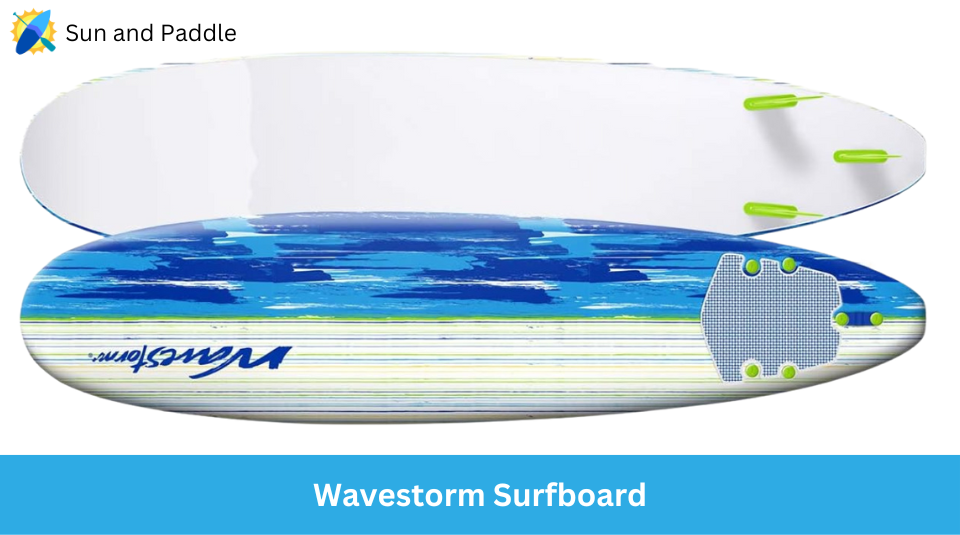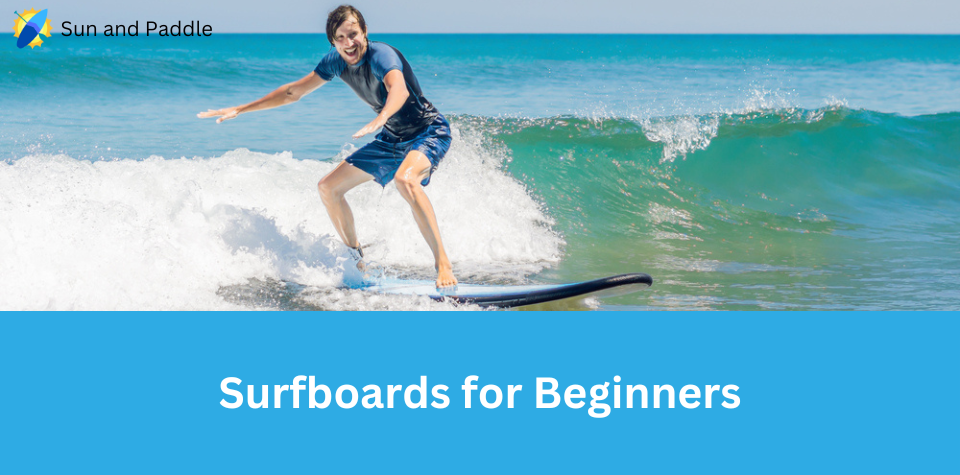Getting started with surfing can be an exciting yet daunting experience. One of the most important decisions you’ll make as a beginner is choosing the right surfboard. The size and shape of the board you select will play a significant role in your ability to learn the sport and maintain your enthusiasm for it. With so many options available, it’s essential to understand what factors to consider when selecting the ideal surfboard for a beginner.
A suitable surfboard for beginners should be easy to paddle and provide stability while catching waves. Longboards, which are over 8 ft tall and over 20 inches in width, are a popular choice for novice surfers because their higher volume (between 60-100 liters) and length offer great buoyancy and stability. However, other factors like width, thickness, and core materials should not be overlooked when determining the best option for you.
To simplify the process of choosing the perfect surfboard, it’s recommended to start with a board that’s at least 2 to 3 feet taller than your height and has a thickness of around 2.5 to 3 inches. By considering these aspects and taking your time to research various options, you’ll find a surfboard that helps you enjoy the thrilling world of surfing and build your skills with confidence.
What Sizes and Shapes Should Be Considered of a Surfboard for Beginners
Length
As a beginner, you should opt for a longer surfboard, typically over 8 feet in length. Longer boards provide more stability and make it easier for you to catch waves and stand up.
Width
Choose a surfboard that is at least 20 inches wide. Wider boards offer better balance and help you maintain control as you learn the basics of surfing.
Thickness
A thicker surfboard provides more buoyancy, which helps beginners stay afloat. Look for boards with a thickness ranging from 2.5 to 3 inches.
Soft-Top Boards
Consider using a soft-top board, as they are more forgiving and safer for beginners. Soft-top boards reduce the risk of injury during wipeouts and are more buoyant compared to traditional hard-top boards.
Minimal Rocker
A board with minimal rocker (the curve of the board from nose to tail) is ideal for beginners. This allows for better stability and easier paddling while you learn the ropes.
Volume
Focus on surfboards with a higher volume (60-100 liters). Higher volume boards provide more buoyancy, making them easier to paddle and catch waves on.
Wide Nose
A wide nose helps with stability, making it easier for beginners to maintain balance while learning to stand and ride waves.
Tail Shape
Square and rounded tail shapes are best for beginners, as they offer stability and a forgiving ride. As you become more comfortable, you can experiment with different tail shapes that provide increased maneuverability.
Soft Fins
Opt for soft fins when starting out, as they reduce the risk of injury in the event of falls or collisions with the surfboard.
Local Conditions
Always consider your local conditions when choosing a surfboard. Different surf breaks and swell sizes may require adjustments to the size and shape of your beginner board. Consult with local surf shops and experienced surfers to get advice tailored to your specific location.
The Size of Each Type of Surfboard for Beginners
In this section, we’ll discuss the best sizes and shapes of surfboards for beginners and how to choose them.
Longboards
Longboards are the most recommended surfboard for beginners due to their stability and ease of paddling. They typically range from 8ft to 10ft in length and have a width of 20″ or more. Their volume falls between 60-100 liters, which provides excellent buoyancy. When choosing a longboard, remember that a longer board will offer more stability, making it easier for you to learn.
Soft-Top Boards
Soft-top boards, also known as foam boards, are another great option for beginners due to their forgiving nature and added safety. They range in size from 6ft to 8ft in length and have a width of around 21″-22″. These boards also have a higher volume, making them more buoyant and stable while on water. When selecting a soft-top board, consider your weight and height for the best performance.
Mini Malibu
The Mini Malibu, or Mini Mal, is a popular choice among beginners who want the stability of a longboard but in a smaller package. These boards generally range from 7ft to 8ft in length and are around 21″-23″ wide. The Mini Mal has a slightly lower volume than a longboard, making it a bit more agile in the water. Keep in mind that these boards may be a little more challenging for absolute beginners, but they offer a great transition from beginner to intermediate level.
Mini-Longboards
Mini-Longboards are a blend of longboard and shortboard designs, providing good stability and maneuverability for beginners. They range in size from 7ft to 9ft in length and have a width of approximately 21″-23″. When choosing a Mini-Longboard, consider your weight and height, as well as your level of comfort in the water. These boards can be a good choice for those who want to progress quickly in their surfing skills without moving to a more advanced and challenging shortboard.
Your First Board for Learning to Surf

Most beginners learn how to surf on a foam board or a long board. The board commonly used for surfing lessons is the Wavestorm 8 foot surfboard. It is an 8 foot soft board, ideal for beginners.
Whether you learn how to surf from a lesson, with a friend, or from watching videos, it’s best to start with a board geared toward beginners. Eventually, you’ll be able to move onto a board for tricks or speed, but for now start with a beginner board.

